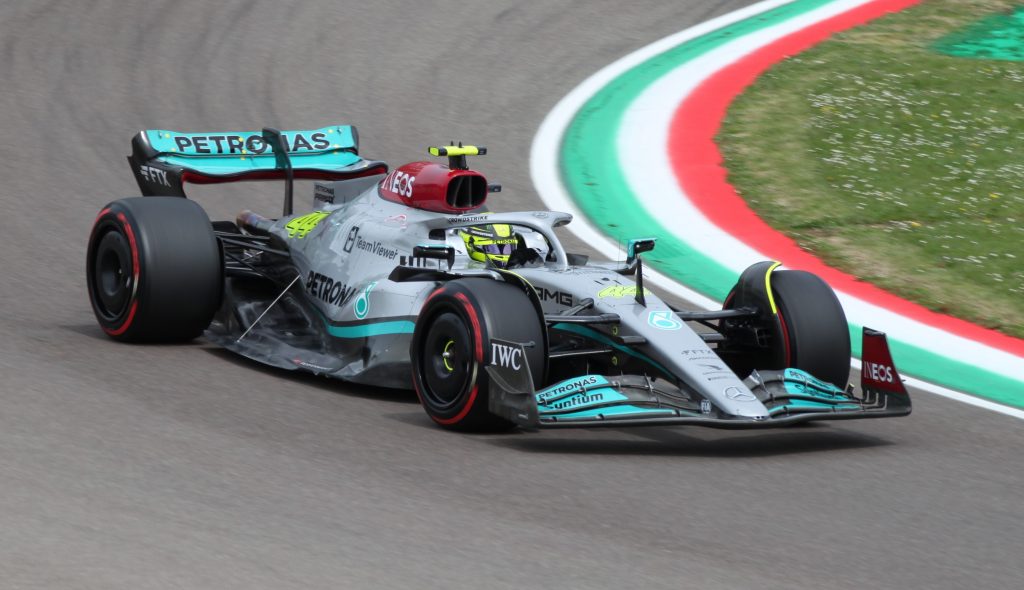
“Maybe he is thinking he should have stopped last year!” said Red Bull team advisor Helmut Marko after their Max Verstappen lapped Lewis Hamilton at Imola. His comment sent fans of Hamilton into a frenzy, many worrying this was the first hint of retirement for the seven-time champion.
But, Hamilton was quick to dismiss rumours of his retirement on his Instagram, writing, “Working on my masterpiece, I’ll be the one to decide when it’s finished.” Accompanied by dramatic photographs, it seems clear the driver is not discouraged.
However, it’s hard to ignore Hamilton’s disappointing results. The Emilia Romagna Grand Prix at Imola cemented the worry for fans after Hamilton finished 13th. While Hamilton has climbed his way to 6th place ahead of this weekend’s Netherlands Grand Prix, many fans are surprised he’s not at the top.
Then comes the debate: is Hamilton losing his winning touch, or is a mechanical fault to blame for his unfortunate results?
What’s happening with Mercedes cars?
While Mercedes is a consistent Constructors’ Champion, there’s no hiding the complications that have arisen this year. Toto Wolff, the team principal of Mercedes, has even apologised to Hamilton for the car’s difficulties.
Drivers have struggled with an issue called “porpoising”. This is when the airflow under the car becomes disrupted, leading to bouncing when driving straight. It wasn’t until the Montreal weekend that Mercedes finally solved this issue, proven by their success at the Canadian Grand Prix.
However, by fixing one issue, Mercedes have created another. Their cars are now very stiff to operate, causing them to hit the ground or kerb of uneven circuits. While porpoising may no longer be an issue, Mercedes drivers are still experiencing a bumpy ride.
Are the new rules to blame?
The answer to this question isn’t a simple yes or no. There are many differing opinions, factors, and even some conspiracy theories.
Firstly, what are these new rules? While F1 always aims for an entertaining show, safety comes first. These rules were set to impact the car’s aerodynamics, wheels, and suspension for improved safety.
Although F1 decided to change their rules for safety reasons, it was also to level the playing field. In recent years F1 has been dominated by Mercedes, so the rule change was to encourage other drivers to excel. A budget cap was introduced, directly impacting the biggest spenders.
Thus, these regulations have forced competitors to redesign their cars, which has resulted in numerous problems – the most common being porpoising, as discussed above. This issue has affected several drivers, but Mercedes more than most. While Ferrari initially struggled with this, they’ve managed to come back swinging and are currently third and fourth in the standings.
Can a worker really blame his tools?
However, Mercedes’ car issues are only one factor in this equation. While porpoising can affect driving, can it be blamed for Hamilton’s performance?
All you have to do is look at Hamilton’s teammate, George Russell. He has also felt the effects of troubling car issues but is currently ranking above Hamilton.
Plus, Hamilton’s behaviour could also be the culprit. During the Belgian Grand Prix, Hamilton collided with Fernando Alonso, sending his car airborne in a crash Hamilton said: “almost broke [his] back.” Many spectators were quick to criticise Hamilton, but no more than Hamilton himself. He admitted the crash was his fault.
So, the question becomes, is Hamilton feeling the pressure? Due to his car issues, does he feel pressured to take dangerous risks to get back to the top? But, can you really blame the car, or is the issue, as Nico Rosberg suggests, “closer to home”?
The masterpiece isn’t finished
Regardless of what side of the debate you find yourself on, Hamilton’s intentions are clear for all to see. While the chances of winning his eighth championship this year are slim, it sounds like he’ll be around next year to try. What time he retires will be his decision, and he’s not ready to give it up yet.








![How much does it cost to buy the World Cup? [Infographic]](http://silb.co.uk/wp-content/uploads/2014/04/silbLOGO3-150x150.png)









